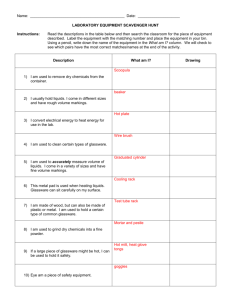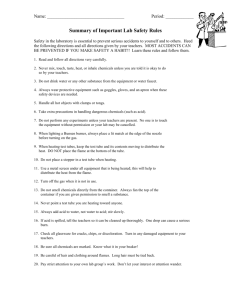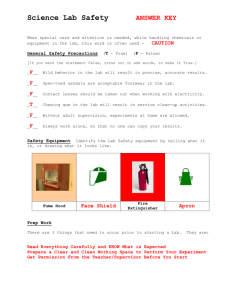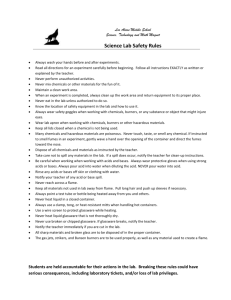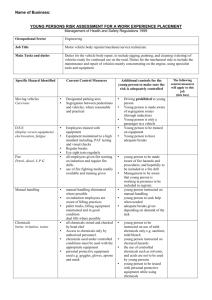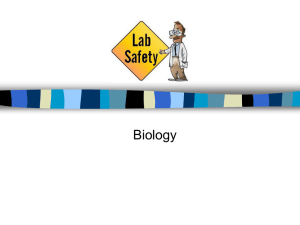Lab Safety - Ms. Simmons
advertisement
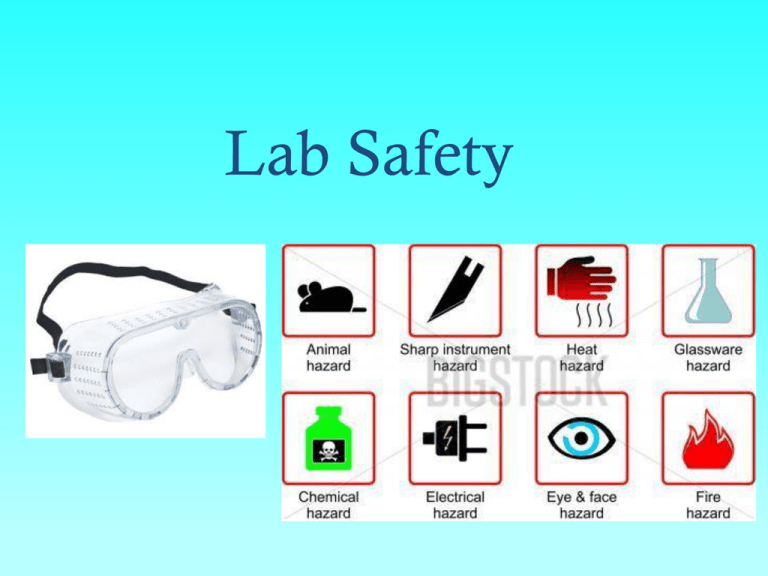
Lab Safety General Rules 1. Follow all instructions given by teacher. 2. Do not horse around in the lab. 3. No food or drink (including water and gum) in the lab. 4. Do not use/touch chemicals or equipment without permission. 5. Wear appropriate protective equipment. 6. Wash hands at completion of labs. 7. Do not sit or stand on lab tables. Protective Equipment On occasion we may not require any protective equipment, as when we did the alka selzer lab. Often we will require protective equipment. ALWAYS we will require long pants and closed toe shoes. Protective Measures Long hair should be fastened up or back. Wear closed to shoes!!! Clothing should fit appropriately. Overly baggy sleeves can be a hazard. Jewelry is not well-suited for the lab. Proper Procedures 1. Notify the teacher immediately of ANY mishap: spills, broken glassware, injury 2. Use equipment in designated areas only. 3. Read instructions carefully BEFORE beginning. 4. When special instructions are given for a lab, take notes and follow the instructions. 5. Use proper techniques always (observing, smelling, heating, stirring). Examples of Safety Procedures • Keep burners in the middle of the lab table, not on the edge. Do not leave burners unattended. • When heating liquids in test tubes, never point the tube toward yourself or anyone else. Never heat the test tube directly at the bottom but tilt the tube and heat it gently between the bottom of the tube and the top of the liquid. • Use boiling chips when boiling liquids in a flask or beaker to prevent bumping. • Secure all glassware not on lab bench. • Smell a chemical by wafting. Examples of Safety Procedures • Never return chemicals to bottles of their origin. If you have excess, give it to another student or put it in the waste container provided. • Always add concentrated acids or bases to water, never water to concentrated acids or bases. • Keep work space clean and uncluttered. Avoid contaminating chemicals (for example: using the same spatula for two different chemicals). • Check glassware for stars or cracks before using. Avoid using damaged equipment. • Keep chemicals closed when not in use. Learning Check Learning Check Learning Check Which picture shows correct technique? OR OR Safe or Unsafe? Ready for Lab? What’s wrong with this picture?

